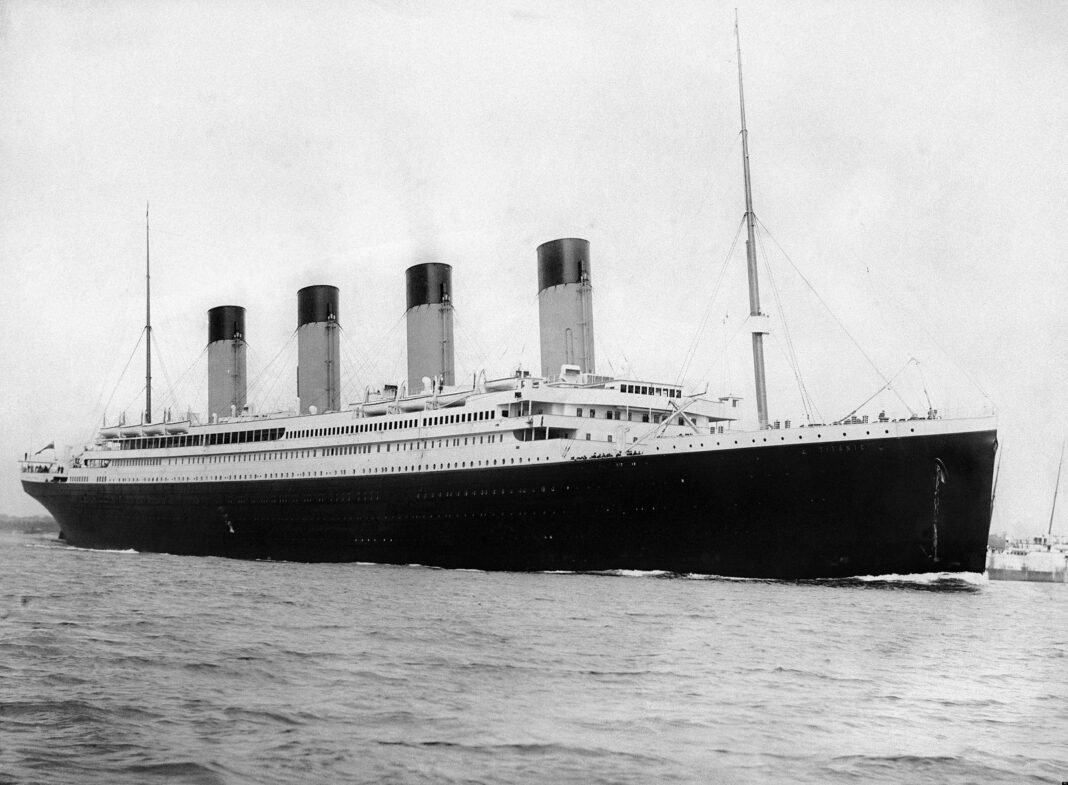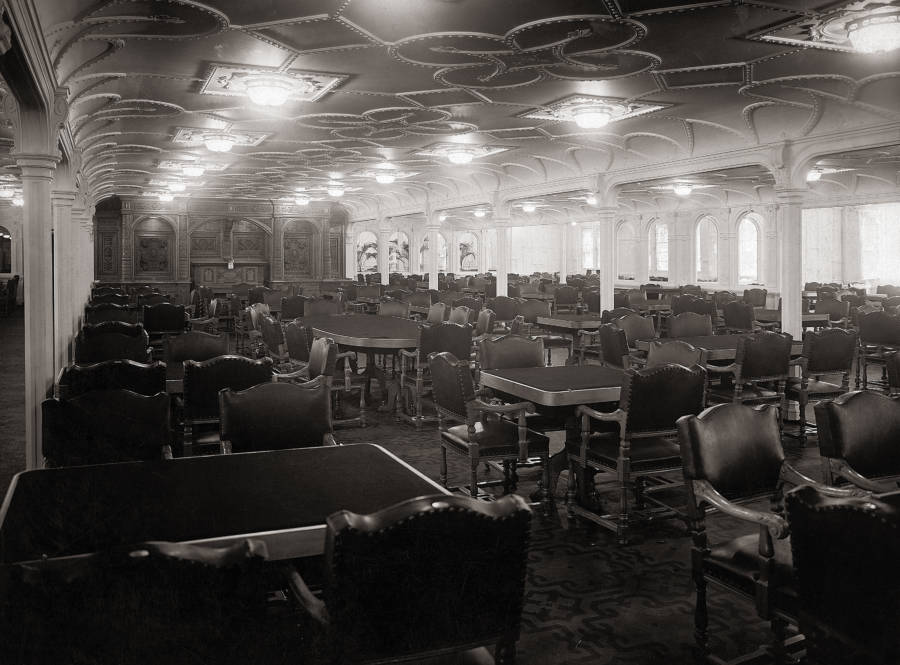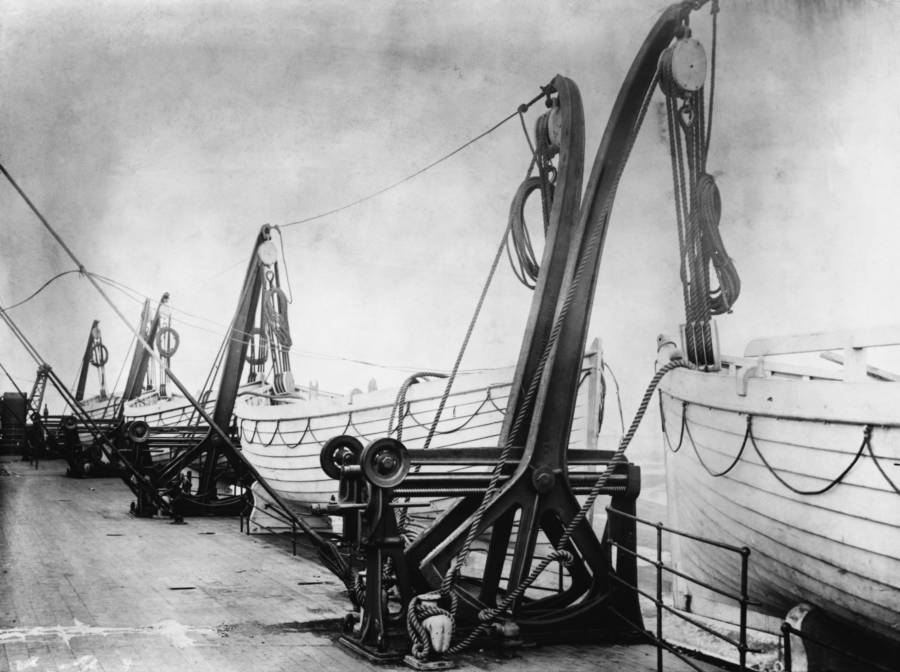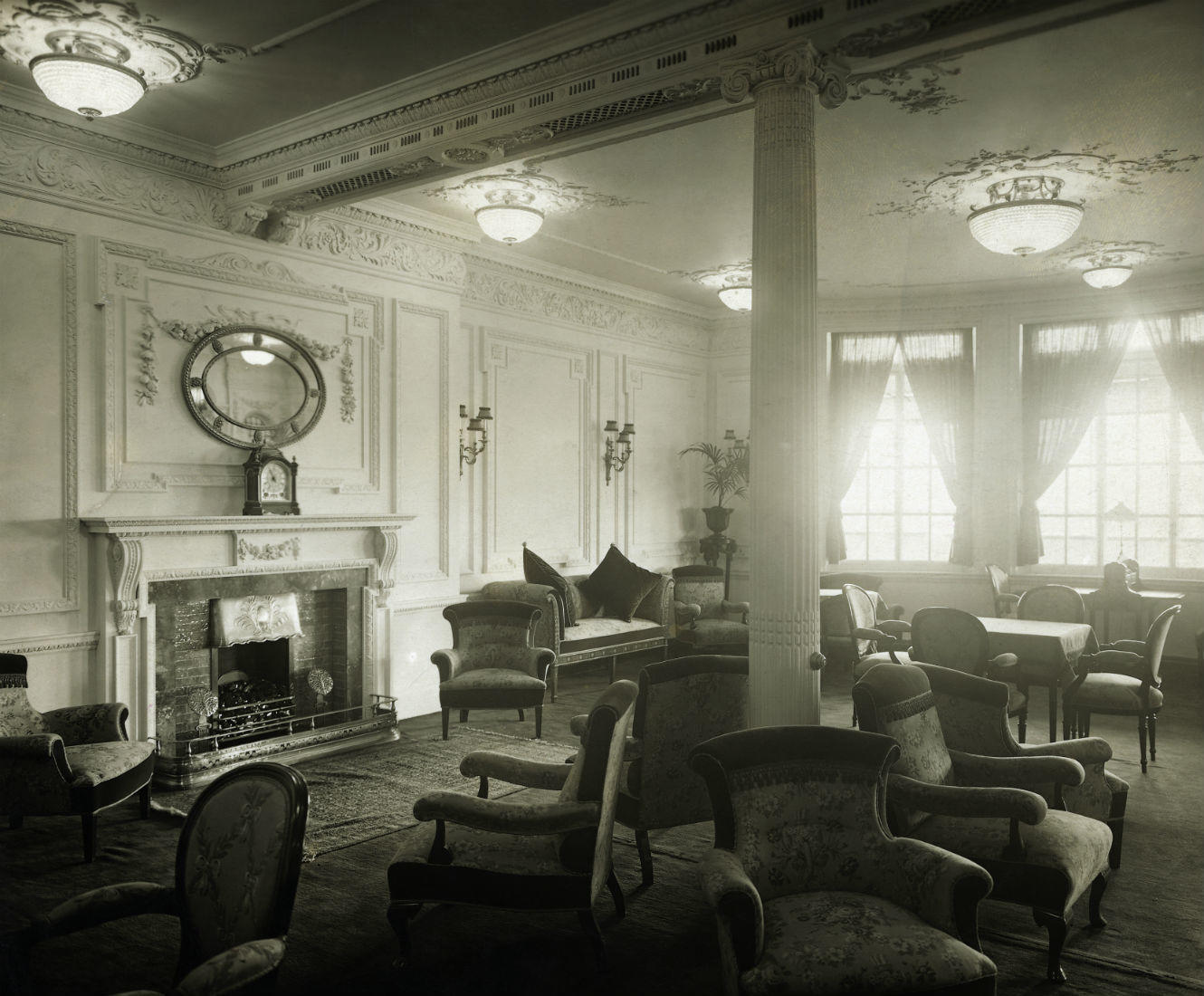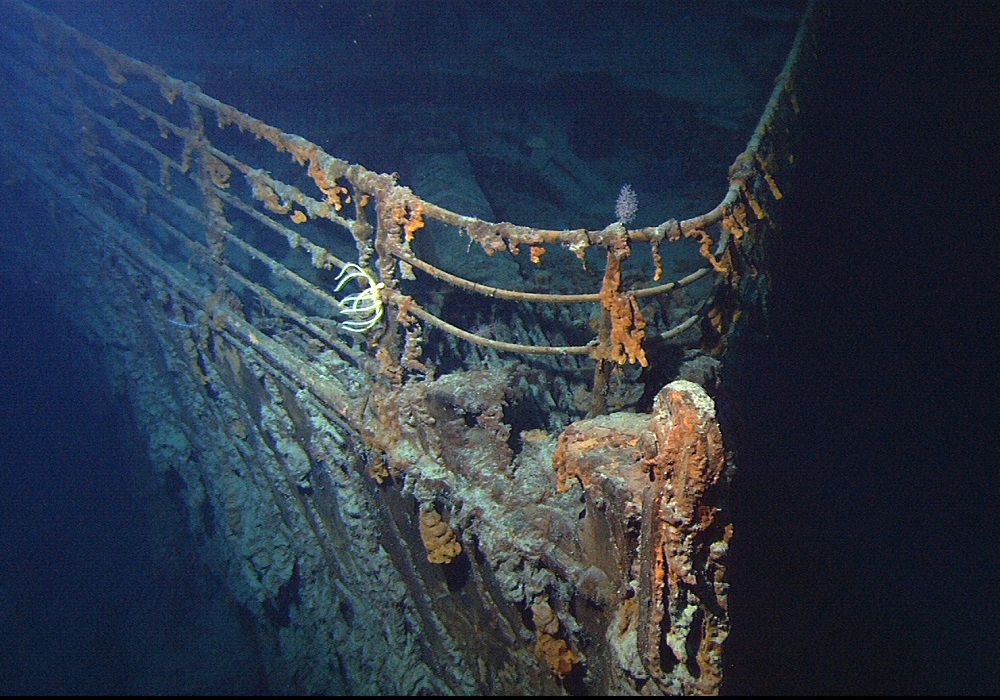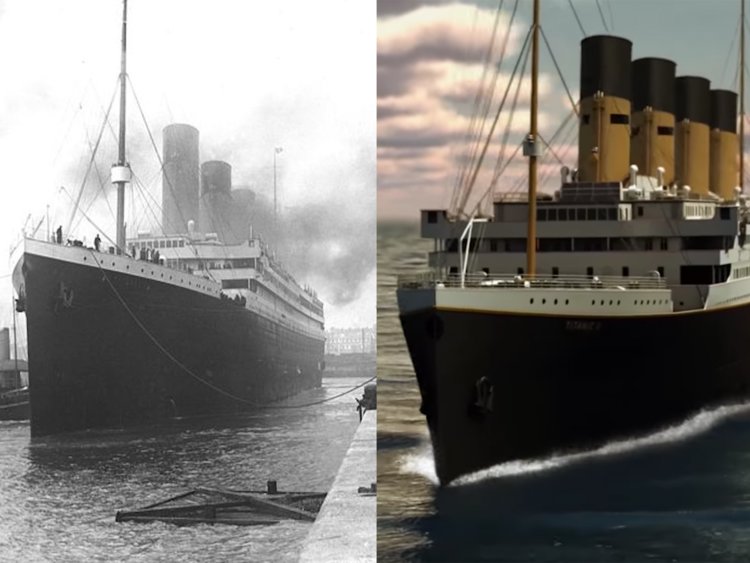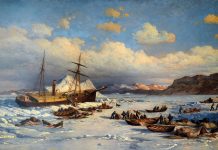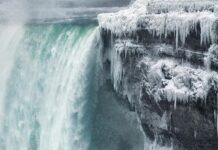The sinking of the Titanic is the most infamous shipwreck in history. The tragedy happened on the 14th of April, 1912, when the ship hit a giant iceberg in the North Atlantic. The movie Titanic which depicted the tragic events achieved critical and commercial success winning 11 Oscars. Although we have all heard about the Titanic, here are some lesser-known intriguing facts.
-
The Titanic was the largest and most luxurious passenger ship afloat at the time
In the early 20th century, the biggest passenger steamship lines started building giant transportation ships that offered both speed and luxury. The Titanic was built by The White Star Line for around $7.5 million. It was the biggest and most luxurious passenger ship at the time. It had a swimming pool, sunrooms, a Turkish bath, squash and tennis courts, a gymnasium and fine dining rooms.
The ship’s length was around 292 meters (882 feet, 9 inches) and it weighed 46,328 tons. The steel construction was held in place by 3 million rivets weighing 1,200 tons, and each link in the anchor of the ship weighed around 80 kg (175 pounds). The Titanic was able to achieve 50,000 horsepower and its top speed was 23 knots.
It carried about 1316 passengers and 885 crew although other sources have slightly different numbers. However, there were only 20 lifeboats, which could hold between 40 and 60 people.
2. The fate of Titanic was predicted in the novel “The Wreck of the Titan” in 1889
The Wreck of the Titan: Or, Futility is a novel written by Morgan Robertson. The book was written 14 years before the sinking of the Titanic, but the events have an uncanny resemblance with the real-life occurrence. First of all, the names of the two ships are very similar: Titan and Titanic (you gotta be kidding me). They were both described as the biggest and most fabulous ships that were ever built, even called “unsinkable”. The Titan was 800 feet long and weighed 45,000 tons; the Titanic was 882.5 feet and weighed 46,000 tons. They could reach speeds of around 25 knots. Both could carry as most as 3000 passengers and both had a shortage of lifeboats. But that’s not all! The two ships began their first voyage in April, hit a giant iceberg and sank in the North Atlantic at almost exactly the same place – 400 nautical miles (740 km; 460 mi) from Newfoundland (Terranova).
3. Weather conditions should be partially blamed for the accident
Big chunks of ice were not uncommon between Ireland and Newfoundland, but according to some studies made in recent years, the specific weather conditions in April 1912 doubled the usual number of icebergs. The culprit was the freezing air that met the southward flow of the Labrador Current off the coast of Newfoundland, which led to a big stream of icebergs being swept farther south than was usual for most of the 20th century.
“In 1912, the peak number of icebergs for the year was recorded in April, whereas normally this occurs in May, and there were nearly two and a half times as many icebergs as in an average year,” the authors of the study wrote. What’s more, on April 14, 1912, the Titanic received several warning from other ships about icebergs along their routes, but unfortunately, they did not reach the captain.
4. After the collision, most of the passengers were not concerned
In 1955 Walter Lord published the book “A Night to Remember” which depicts the sinking of the RMS Titanic. He spoke with more than 60 survivors of the accident, and most of them revealed that they were not particularly concerned about the collision. Many passengers from the first and second class hardly felt the impact and continued with their regular activities. However, soon after that, it started to become evident that something was not right.
The passengers did not receive clear instructions for boarding the lifeboats. Once panic spread, the process of filling the boats became chaotic. An аdvantage was given to women and children, but there were some exceptions in first and second class, but boats were lowered with only half of their seats filled. Third-class passengers were largely left on their own.
5. Hundreds of passengers were saved, but more than 1000 died
There were 2201 passengers and crew on board, but only 771 survived the sinking of Titanic. The death toll according to the British government was 1490. Fewest casualties were recorded among the first-class passengers: 203 out of 325 (62%) survived. In the second class, 118 of 285 passengers (41%) made it out alive, while only 178 of 706 passengers (25%) survived from the third class. Of the crew, 673 out of 885 (76%) went down with the ship, including Captain Edward Smith.

The situation might have been different if the nearest ship – a merchant vessel called the Californian came to help. However, the communication operator went to bed minutes before the Titanic’s collision with the iceberg. Therefore it sailed past despite the fact that it was fewer than 10 miles away from the accident.
The distress signals were picked up by the passenger steamship Carpathia which was 58 miles away, and it took almost 2 hours to reach the first Titanic survivors.
6. Celebrities testified at the Titanic sinking inquiry
Sir Ernest Shackleton was a hailed veteran of two expeditions to Antarctica and was an expert witness in the British government’s inquiry into the Titanic sinking, as he had profound knowledge about icebergs.
“With a dead calm sea there is no sign at all to give you any indication that there is anything there. If you first see the breaking sea at all, then you look for the rest and you generally see it. From a height it is not so easily seen; it blends with the ocean if you are looking down at an angle like that,” Shackleton said.
Along with Shackleton, another famous person of the time was called to offer testimony: Guglielmo Marconi, a Nobel laureate and the inventor of the wireless communication system used in nearly every ocean liner by that point, explained the regulations for sending distress signals.
7. The exact location of the wreckage was unknown for 73 years
Multiple expeditions tried to find the final resting place of the Titanic in the North Atlantic, but they all failed until 1985. The team was lead by Robert D. Ballard, then a senior scientist at Woods Hole Oceanographic Institution, and Jean-Louis Michel of the research institute IFREMER. It is said that the U.S. Navy commissioned Ballard to find 2 Cold War-era nuclear submarines that had sunk in the North Atlantic decades before, but he only agreed because he could use the technology to search for the Titanic in the same area.
The expedition used a remote-operated vehicle (ROV) to survey the deep sea. On the 1st of September, the crew saw the first images of Titanic’s debris from the ROV and they were later published and broadcast around the world.
8. Edible cheese and wine from the Titanic?
When the wreckage of the Titanic was found, Holger W. Jannasch – a senior scientist in Woods Hole’s biology department in 1985, made an interesting claim that there could have been some edible cheese down there.
“Some foodstuffs, such as cheese, are protected from decay by the very microbial activity that starts the degradation process. If kept in boxes, it may have changed little over the extended time period. The microbes that turn milk or whey into cheese produce either highly acidic or highly alkaline conditions, both of which protect these highly proteinaceous foodstuffs from further spoiling,” wrote Jannasch.
Similarly, wines seen on the bottom of the ocean “may still be drinkable and possibly of excellent quality, the normal ageing process being slowed down during the years of deep-sea storage at about 36°F (2°C)”, he wrote.
9. Titanic’s real size replica should sail again
In 2012, the Australian businessman Clive Palmer made a deal with the Blue Star Line shipping company to build a nearly exact replica of the Titanic. According to the plans, the Titanic II should complete the journey that was not meant to be. The replica will be slightly bigger – with space for 2400 passengers and 900 crew. The maiden voyage is scheduled for 2022 and hopefully this time, there will be plenty of lifeboats and well-made evacuation plans in case of icebergs.

